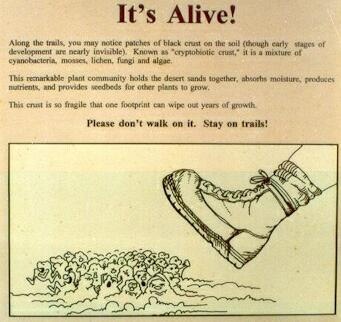

 |
 |
 |
 |
 |
 |
 |
 |
 |
 |
 |
 |
 |
 |
 |
 |
 |
What is Desert Crust? Desert Crust is 'Alive". It is a Cryptobiotic soil is composed of living cyanobacteria, green algae, brown algae, fungi, lichens and/or mosses. They are commonly found in arid regions around the world.and are commonly called "Desert Crust". Here is how they may have an affect on Rockhounding in arid regions of the western United States. Desert Crusts are important members of desert ecosystems and contribute to the well-being of other plants by stabilizing sand and dirt, promoting moisture retention, and fixing atmospheric nitrogen. Because of their thin, fibrous nature, cryptobiotic soils are extremely fragile systems. A single footprint or tire track is sufficient to disrupt the soil crust and damage the organisms. While some species within the soil crust system may regrow within a few years of a disturbance, the damage to slow-growing species may require more than a century before the delicate soil returns to its former productivity. These crusts are gaining attention among environmental groups and conversationalists.
Return to Home Page | ||

 This Sign in the Arches National Park, Utah, USA. Probably one of the few signs in the world that says, in effect: Please don't walk on our microorganisms! As can be seen this could have a larger impact on access to collecting sites in the western United States where arid conditions exist. Soon walking to collecting sights may be considered off limits.
This Sign in the Arches National Park, Utah, USA. Probably one of the few signs in the world that says, in effect: Please don't walk on our microorganisms! As can be seen this could have a larger impact on access to collecting sites in the western United States where arid conditions exist. Soon walking to collecting sights may be considered off limits.